Friday 27th January 2023, 10:00am
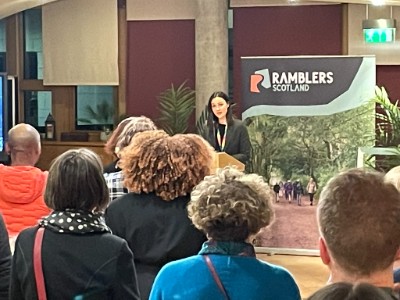
Our CEO Stuart Younie started off 2023 with our three-yearly
development audit, carried out by KPMG on behalf of sportscotland. Considerable
work went onto collating the necessary paperwork in late December in advance of
the audit, which takes a detailed look across all of the organisation’s
activities including governance, financial management, policies and procedures,
IT, risk and planning and reporting. We now wait on a draft report which will set out any recommended
areas where we can make improvements and hopefully highlight some areas
of good practice.
Stuart also set up an initial planning session with the
senior team to take some time to reflect on our challenges and achievements in
2022, and look at the priorities for the year ahead, which will form the basis of
an updated operational plan. Following changes to the Mountain Safety and ClimbScotland
teams in 2022, there are some big projects taking place 2023, including the launch
of our new path campaign, a review of Respecting Scotland’s Mountains and
updates to our communications and membership strategies.
Stuart, Davie Black and our new Director for Access and the
Environment, Pete Crane, also attended a parliamentary reception on the 18th of
January, which was hosted by Ramblers Scotland to celebrate the 20-year
anniversary of the Land Reform (Scotland) 2003. For those in attendance, it was
a rare opportunity to catch up face to face and network with colleagues from
across the outdoor sector having been largely restricted to online video calls
over the few years.
Later in the month, we held a meeting to start detailed
planning for our new path campaign, working in partnership with the Outdoor AccessTrust for Scotland, with the generous support of the Scottish MountaineeringTrust Diamond Grant, which we were awarded last year. Named 'It’s Up to Us', the campaign will launch in the spring, and we have also been liaising with the
BMC about how we can link with the work they are carrying out through their
Mend our Mountains initiative, which has very similar objectives.
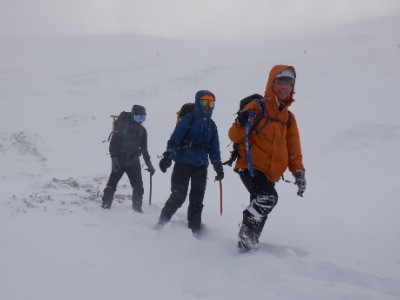
The Mountain Safety team have been busy working on the delivery of the One Day Winter Skills and Winter Navigation Courses this month. Conditions can certainly be classed as winter, giving plenty of opportunities for members on the courses to learn and practice their winter skills and developing avalanche awareness and good navigation strategies.
The team also had a very successful weekend working with great group of instructors and freelance staff from Glenmore Lodge on the Student Winter Skills Weekend. This saw around 60 students from various University Mountain Clubs come together to learn and develop winter skills and decision making strategies for being in the winter environment, which they can take back to their clubs to help progress other members when out on the hills.
Mountain Safety Advisor Ben Gibson has also been working with clubs to deliver winter skills and winter mountaineering training, as well as hosting the Winter Skills for the Hills talks at various locations in Scotland.
It’s been a busy January, with the conditions varying from almost too much snow to not enough! Hopefully, February onwards will see a return of what a proper Scottish winter landscape should be this time of the year!
#SmartNav
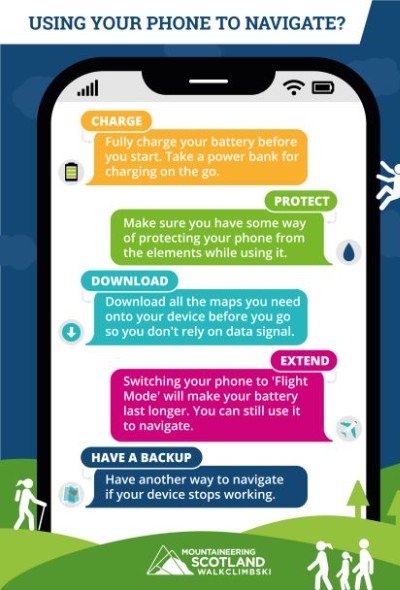
The year got off to a busy start for the Membership and Communications team, with the launch of our new #SmartNav guidance and infographic.
Following the results of a survey we carried last year -which showed that 87% of people said they used an electronic device for navigating at some point on their walk, and 40% of those said they had experienced a situation where their device had stopped working in some way - we’ve provided five simple steps to help keep your mobile phone and GPS working for when you’re using it for #SmartNav in the hills.
PROTECT – keep your phone in a waterproof case to protect it from the elements, even if it’s rated as waterproof, and keep it close to your body when not in use to keep it warm, dry and help battery life.
DOWNLOAD – download all the maps you might need so you don’t need to rely on mobile data to be able to access maps while you're on the hill. Include maps of the surrounding areas in case you need to change your route, and use a topographic map (eg OS or Harvey Maps) – not all digital maps are suitable for hiking in the hills! If you are planning to follow a route downloaded from an app or website, it's worth checking with other reliable sources of information to make sure it's safe and suitable for your level of experience and ability.
EXTEND - Switching your phone to ‘Flight Mode’ stops it talking to the outside world and makes your battery last a lot longer. The GPS will still work, so you can still navigate. Taking a ‘Power Bank’ and an appropriate cable to link your phone to it, will give you the option to re-charge on the go – this might not work in very wet conditions though!
TAKE A BACKUP - No system is 100% fail safe, so having a separate system to navigate with if the phone or GPS were to fail is a must, for example a map and compass, and a good level of skill to be able to use them. If your phone isn’t working and you can’t use it to navigate, it also means you can’t use it to phone for help either! Having a simple backup phone in the first aid kit with actual buttons and a battery that will last for 6 months switched off is something to consider too.
The guidance was well received, gaining widespread coverage in the press, online and on-air, with CEO Stuart Younie appearing on BBC Radio Scotland and Senior Mountain Safety Advisor Ross Cadie chatting on the Out of Doors show.
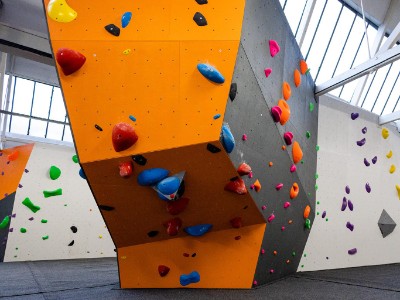
As part of the development of the UK and Scottish climbing talent and performance pathway, we recognise that we will also need to develop our national coaching workforce. As such, ClimbScotland are in the process of recruiting and developing a number of coaches to help us work towards becoming one of the leading climbing nations. Applications closed at the end of January, with interviews taking place in the first week of February.
Members of the team also attended the opening of new bouldering wall – Block 10 – in Dundee in January. Offering 558m² of climbing surface, Block10 Bouldering offers a state-of-the-art facility, including a standalone competition wall that is set with competition style problems. The boulders throughout are set with high end holds with problems suitable to all levels of climber.
A brand-new episode of ClimbScotland’s podcast ScotRock is now live, featuring mental health professional, Lanah Dunsmuir. Like all climbers, Lanah has gone through the rollercoaster of fears and anxieties that climbing can bring but all condensed into a fair shot period of time. Listen now by clicking here.
January saw the start of the ClimbScotland FUN Climbing Competition (CSFC) - Scotland's entry-level competition – which kicked off on the 21st of the month. It offers a great way to have a go at competition climbing, perhaps for the first time ever, and compete against your friends whether they are from your school, in your youth group or your climbing club or squad.
Several FUNdamentals of Climbing workshops also took place in January, as well as the opening of bookings for two new Inclusive Climbing Workshops with Able 2 Adventure, aimed those looking to support and work with people with additional support needs in climbing wall environments.
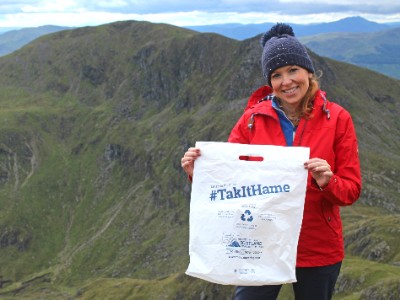
In January we celebrated the 20th anniversary of the Land Reform (Scotland) Act 2003. It has worked very well for the most part, although the number of various access queries from our members monthly shows that there is still some understanding needed on how to word advisory signs, the effect of extensive deer fences and access points, the locking of gates and the blocking of parking places. We also have to remember our responsibilities for caring for the environment and others’ rights, but our membership is good in remembering to Tak It Hame and donate a Tree A Trip.
A matter of some significance was the publishing of the Scottish Government’s Onshore Wind Policy Statement a few days before Christmas, and the debate and passing in parliament of the National Planning Framework 4. The effect of these two new policy statements creates a target of a minimum of 20 GW of installed onshore wind capacity by 2030, from a current capacity of 8.7 GW as of June last year. This is combined with a policy realignment in planning that states that “development proposals in areas identified as wild land in the Nature Scot Wild Land Areas map will only be supported where the proposal will support meeting renewab le energy targets.” This is followed by a statement that requires such developments carry out a wild land impact assessment to minimise significant impacts on the qualities of the wild land.
Public Inquiries that haven’t yet been signed off by Scottish Ministers have been re-opened for assessment of the effect of these new policy aspirations, and we have had to produce statements on how they affect our previous arguments for 6 windfarm proposals that we have objected to over the past 4 years, for mountaineering interests and visual impact on the landscape.